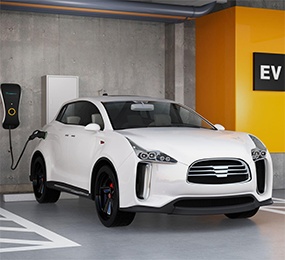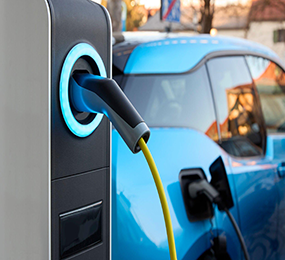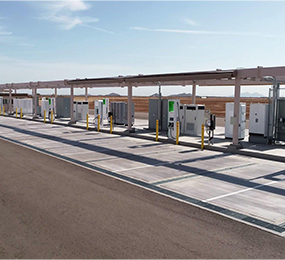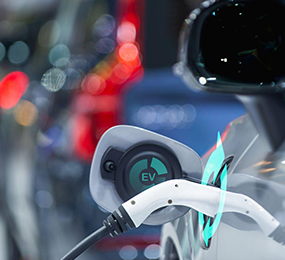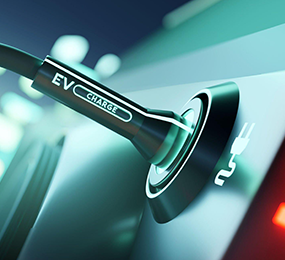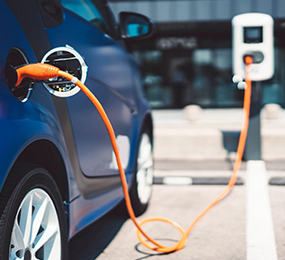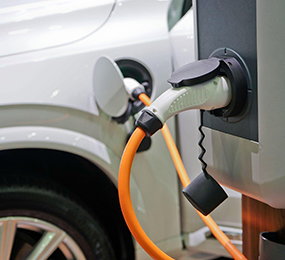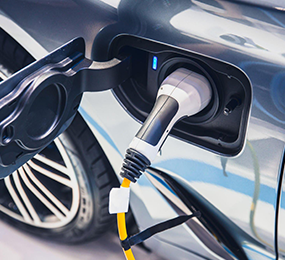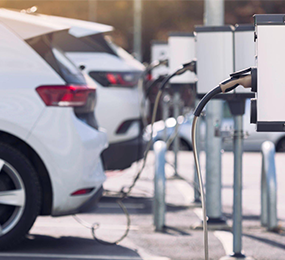Challenges & Opportunities of Electric Vehicle (EV) Charging
Electric cars (EVs) have evolved dramatically over the last decade, thanks in part to lower battery costs. EVs, however, are more expensive than gasoline-powered vehicles throughout their useful life.
1. Expensive EV Charging Infrastructure Installation
The cost of installing an EV charging station is extremely costly and varies depending on the type of chargers used. Minimum infrastructure requirements must be met in order to set up the EV charging infrastructure, and choosing the correct provider and location is critical. The cost of establishing the EV charging infrastructure is determined by the cost of land, wires, and other auxiliary equipment. There is also a variable cost of electricity and power demand for quick charging.
Given the expensive cost of establishing an EV charging station, the only option to make rapid charging stations financially feasible is to increase their use. To begin, the charging infrastructure should be placed in an easily accessible location, and DC charging, which is preferable to AC charging technology, should be deployed. The government should also step in to assist those who need to invest in and benefit from the charging infrastructure.
2. Compliance with a Variety of Charging Protocols
All types of electric charging points should be compatible with EV charging systems. Incompatibility can cause voltage, current, and frequency mismatches. This can raise the cost and complexity. When questioned about the difficulties encountered in designing its charges, the response also mentioned the unstandardized pricing procedures.
To summarize the difficulties encountered in designing an EV charger:
• There were no standards for charger design or power ratings available.
• Because there is no standard charging coupler used by EVs on the road, designing a charger coupling socket is problematic.
• Slow component procurement and technical support increased product development time and expense.
3. Voltage Fluctuation Protection
Setting up EV charging stations necessitates specialist technical knowledge. Voltage swings, ground faults, and overcurrent can all be dangerous. If there is a rapid rise in voltage, the pricey components may be damaged. Additionally, noise filtering components must be installed with care. A secondary level safety measure should be established in addition to this. Testing must be done for added security. To keep voltage fluctuations under control, sensors such as proximity sensors and control pilot sensors must be incorporated.
4. Hardware and software-related issues
There are several hardware and software-related difficulties that must be solved while establishing an EV charging infrastructure. When the protocol's criteria are satisfied, the hardware components such as proximity sensors and the control pilot handle the connection charging the EV. However, creating such hardware components for numerous protocols with varying circumstances is a difficult task. Heat dissipation, insulation, grounding, voltage measurement, and power concerns must all be addressed.
In terms of software, it is required that charging begin only when specified requirements, such as connection to ground, current filtering, and so on, are satisfied. The difficulty is in developing the software to recognize the protocol supported by the EV and alter the charging modes accordingly.
There are several hurdles to establishing an EV charging infrastructure, including:
1. Uncertainty: One of the key challenges is deciding which technology to use for communication with EV batteries (BMS). This issue appears to have been first resolved by the GOI developing Standards.
2. Capacity: Another issue that has to be addressed is the capacity to build, which is still in the early stages.
3. Supply Chain: There is currently no defined supply chain. Many parts, particularly connectors and cables, are vital to production for established players and must be supplied from China or Europe. It gets difficult since the volumes are unknown.
4. The tropicalization of imported charging guns (connectors) is likewise a difficult task. Dust, pollution, and high ambient temperatures are causing problems in the case of high-power weapons carrying 200 A or more, as such environmental circumstances have never been encountered before.
In terms of establishing EV Charging Station Infrastructure for Public Charging.
Other issues that must be addressed are:
A. Location: Because private ownership of EVs is still not fully documented, it is impossible to identify hotspots and kinds of facilities with significant footfall.
B. Real Estate: Because EVs must be parked for extended periods of time to charge, the expense of blocking such places in the absence of numerous private EVs adds to fixed costs, making the company unviable.
C. Grid Power Stability: The GOI has released recommendations for Public Charging Stations. From a grid stability standpoint, the current 2-4, DC fast charging sites to cater to 21 KW to 44.5 KW battery packs of the current EVs may not be an issue. However, when vehicle density increases and hubs for their profitability require 10 or more DC fast charging outlets, growth at the same area might be difficult.
D. Power Charger: There are two kinds of chargers: fast chargers and slow chargers. These can be used for public charging stations in general. However, because privately owned EVs are currently scarce, determining volume is difficult. Slow chargers, on the other hand, are 3.3 KW to 22 KW AC type with industrial connections to Type 2 connectors. These are commonly used for home charging and business charging, where vehicles are parked for extended periods of time (exceeding 6 hours).
The charging speed of an electric vehicle's battery pack (2W/ 3W/ 4W) is determined by the power of the charger and the safe limitations set by the battery design to prevent damage.
E. Technology: In India, the technology that will allow Charging Stations to combine with renewable and open-access electricity is still in its infancy. As a result, it is difficult for these Charging Station Operators to provide a competitive pricing.
F. Power Tariff: Many state power regulators have authorized concessional prices for EV meters; however, it is unclear how long this will last.
Visit our website to know more: https://bit.ly/3W0umUp
For more information and group participation, contact us: [email protected]
Leadvent Group - Industry Leading Events for Business Leaders!


